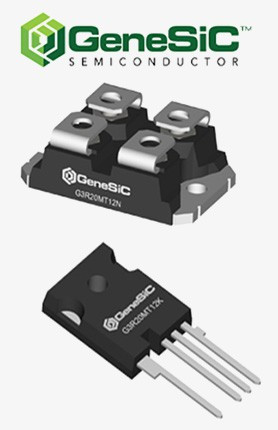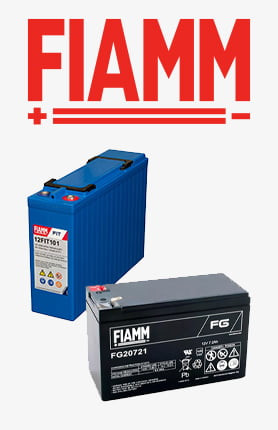Energy storage
| Image | View the product | No. Manufacturer | ||||
|---|---|---|---|---|---|---|
| -- |

|
DACPOL | HOME ENERGY STORAGE ESS | SEE IT | -- | On Order |
| picture_as_pdf |
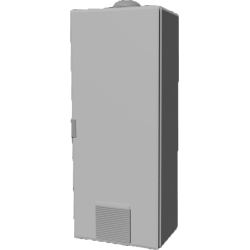
|
DACPOL | ENERGY STORAGE NMC | SEE IT | -- | On Order |
| picture_as_pdf |
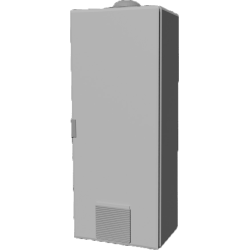
|
DACPOL | ENERGY STORAGE LFP | SEE IT | -- | On Order |
| picture_as_pdf |

|
DACPOL | Battery Pack for Vehicles | SEE IT | -- | On Order |
| picture_as_pdf |
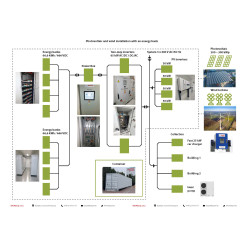
|
DACPOL | Photovoltaic and wind installation with an energy bank | SEE IT | -- | On Order |
| picture_as_pdf |
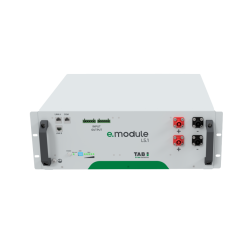
|
TAB | Module TAB e.module L5.1 48V | SEE IT | 1026194 | On Order |
Electrochemical batteries, or accumulators, allow energy to be stored in an easily retrievable form. The advantages of accumulators include a high energy density parameter. Energy density is the unit amount of stored electrical energy, which can be expressed by volume or mass. The disadvantages of using accumulators include self-discharge, wear manifested in parameter changes – so-called battery aging, long charging time, temperature influence, and in some technical solutions, short lifespan.
Two types of accumulators are used in energy storage systems: lead-acid and lithium-ion.
Types of energy storage systems
Lead-acid batteries have an efficiency of around 70%. They are characterized by low cost, simple charging system, and the ability to handle short-term high current loads. This makes them useful in uninterruptible power supply (UPS) systems. A major disadvantage is their short lifespan (about 1000 charge-discharge cycles) and their construction. In lead-acid batteries, the electrolyte is in a liquid state, which can lead to leaks and requires electrolyte refilling. To mitigate this problem, lead-acid batteries are made maintenance-free:
- SLA – Sealed Lead Acid
- VRLA – Valve Regulated Lead Acid
They are produced using two technologies:
- Gel batteries, where the sulfuric acid solution mixed with silica forms a gel, acting as the electrolyte. However, they are less suited for high-power applications due to limited high current discharge capability.
- AGM (Absorbed Glass Mat) batteries, where the electrolyte is absorbed in a porous glass mat separator.
Lithium-ion batteries (Li-ion) have an efficiency of about 94%. These cells are among the lightest, making them ideal for electronic devices. Over time, they have also been used in electric vehicles. EV batteries are more durable (lasting for decades or up to 1800 charge-discharge cycles), and they feature cooling and heating systems. These cells can be fast-charged from 0 to 80% in 15–30 minutes with minimal impact on lifespan. Thanks to electromobility advancements, lithium-ion batteries are increasingly considered for stationary energy storage in renewable energy systems characterized by irregular and unstable operation.
Nickel-metal hydride (NiMH) batteries have efficiencies up to 92% and lifespans up to 2000 charge-discharge cycles. Their main advantage is the absence of toxic cadmium. They have high energy density, capacity, and reduced memory effect. Their disadvantage is a limited ability to provide high currents. NiMH batteries are prone to self-discharge, but ongoing technology development is reducing this issue.
Reactive power compensation using energy banks
Uninterruptible power supply (UPS) systems are used to power essential devices during power outages or protect sensitive components from network disturbances.
UPS systems include capacitors, meaning both active and reactive (capacitive) power is drawn. Newer UPS designs include power factor correction (PFC) systems to reduce harmonics and reactive power draw. This improves the power factor (cosφ) at full load. Another solution is to use a phase shifter in the input circuit, which reduces capacitive input power to zero.
How is an electric energy storage system built?
In an energy storage system, the following components can be identified:
- bidirectional converter – a DC/AC and AC/DC inverter,
- battery pack – a set of chemical accumulators,
- battery management system (BMS),
- programmable controller – manages algorithms,
- supervisory and visualization system (GUI – Graphic User Interface) – allows users to monitor and control the installation,
- auxiliary components for grid connection – installation metering or isolation transformers.
The bidirectional converter deserves a detailed explanation. It’s a DC/AC and AC/DC converter responsible for battery charge/discharge control and energy exchange with the power grid. It ensures proper voltage parameters and peak current in case of overload. It must synchronize with the grid and provide backup operation during blackouts. The converter must also "care" for the battery – charge according to proper characteristics, prevent overheating, and avoid thermal runaway. It should communicate with the BMS and ensure galvanic isolation (e.g., via an output transformer).
Photovoltaics – energy storage improves profitability
A solution to improve PV system profitability is energy storage. Photovoltaic systems equipped with these devices store excess generated power instead of feeding it into the grid, using batteries such as nickel-metal hydride (Ni-MH) or increasingly lithium-ion (Li-ion). This allows flexible power use and avoids unfavorable prosumer billing rules. Energy storage makes PV-equipped buildings independent from the power grid, enabling truly free electricity usage.
Photovoltaics’ requirements – energy storage for PV systems
Batteries used in PV systems must meet specific requirements. DACPOL’s energy storage units must primarily be selected for capacity – matching the installation’s total power. It’s assumed that 1–1.5 kWh of capacity is needed per 1 kWp of installation.
The second important parameter is power, defining how many devices the storage can supply simultaneously. PV system design considers the building’s energy demand, and battery selection should follow the same logic to enable both energy accumulation and backup power functionality.
Efficiency and performance are also key factors. Home energy storage systems offered by DACPOL use:
- lithium-ion batteries with the highest efficiency,
- nickel-metal hydride batteries with slightly lower efficiency.
These batteries ensure efficient PV system operation and reliable power to connected devices.
PV energy storage and lead-acid batteries
Energy storage systems with lead-acid batteries are not recommended for use with photovoltaics. They have low durability due to poor resistance to frequent charging cycles. They also lose capacity at high temperatures and have large physical sizes, making high-power storage installations bulky.

